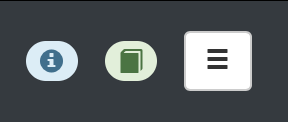This site contains the official, open1 user guide for the Japan Biographical DB (aka JBDB). At the core, the JBDB is a PostgreSQL relational database aiming to provide information on historical Japanese and Japan-related individuals and their personal, political, and social networks. A modern, JavaScript-based web application is used to access, manipulate, and visualize the contents of the database.
This user guide is intended to be used by project contributors (scholars, research assistants, students) and normal users alike. It is currently divided into three larger parts: Database, Visualization Suite, and GIS Suite (see navigation bar at the top). Whereas the first is mainly of concern for project contributors since the actions described require user-restricted and account-based access, the latter two are of interest for both user groups. The Database section is furthermore divided into three parts: Persons, Events, and Sources, one for each editable data entry category.
While the Database section therefore focuses on adding, editing, and deleting data, the Visualization Suite and GIS Suite describe in detail the analytical potential of the data via means of network visualizations and spatio-temporal analysis. It addresses the current functionality and the different ways networks can be generated and, non-destructively,2 manipulated.
The user guide is accessible at all times from the application. In the header, there is a book sign next to the menu button on the right-hand side:

Clicking on this symbol will either open up a specific page of the user guide (depending on where you are) or the front page (this page).
This site will be continuously updated to reflect the latest changes and functionalities that the JBDB and its associated web application provide. If you have any questions or suggestions, or if you notice any bugs, you are welcome to contact me under the following e-mail address: support@japanese-history.org. Along with the link to the GitHub repository of this site, you will also find it in the footer.
Heidelberg, May 2021
Leo Born
1. open means that this user guide is hosted on GitHub and that, thus, the page development (revisions, corrections, additions etc.) can be transparently tracked.↩
2. When manipulating the networks, e.g. highlighting or hiding persons based on certain attributes, the data itself is at all times not altered, but only the display of it (i.e. what the user sees).↩